Archive for October, 2011
Oh Hallows Eve!
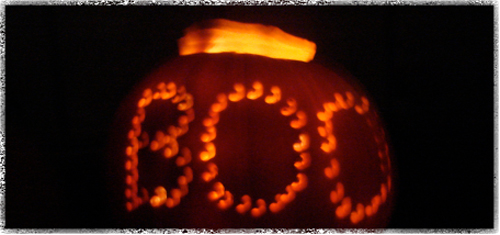
This weekend has been dedicated largely to everyone’s comfort here on the farm. The rabbit has a freshly strawed box in which to spend the winter; all the nesting boxes have been cleaned and repacked with a generous amount of shavings; my tender container garden of salad greens and spinach have been covered with float clothe to keep out the night chill and the wood racks are stacked high with seasoned, split eucalyptus.
The fire stack near the front door and a festively carved Jack-O-Lantern greets friends and neighbors on the front porch.
It’s been a weekend of settling in…to fall…to cooler weather…to fewer outdoor chores and long awaited indoor projects. The farm seems barren as I make my nightly rounds, checking on animals, gathering eggs, topping off water troughs and breathing in the cool crisp air. Most of the fruit trees are losing their leaves and much of the garden has been dismantled, save for a few containers filled with greens. New raised beds await a truckload of composted cow manure; compliments of a fellow 4-H family. And, the rest of the old garden beds have been removed and the whole area weeded and staked out for the new greenhouse and garden.
The weatherman is calling for low 40’s tonight. It was the incentive we needed to stock the wood rack to get ready for roaring fire. The stove has been was bubbling all yesterday, loaded down with chicken carcasses that were transformed into a luscious seasonal Chicken Pot Pie. Paired with a simple salad and a rustic apple pie, it was the perfect end to this all hallows weekend.
Halloween means a lot to me. It is my favorite holiday. It’s not about the scary costumes or the candy or even the wild revelry. Don’t get me wrong… I don’t begrudge people that kind of fun; it’s just not for me. Halloween to me is a time to reflect on seasons past, to find a place of calm after months of busy gardening and animal raising. It’s a time to be grateful for what we have, the food that we’ve grown, the animals that will feed us all winter and the people in our lives. The ancients marked this day as the beginning of a new year. It was a somber day full of remembrances and gratitude. So for me this has been a quiet day of slow and steady work without much fuss.
My morning started off quiet with a breakfast of pumpkin pecan pancakes, bacon and a few fresh eggs thrown in for good measure. I try to make as many pumpkin inspired dishes as possible this month. It just doesn’t seem the same (or right) any other time of year. I sat at my kitchen table, looking out the window, the chickens running from one end of the yard to the other, Sophia flapping her wings the whole way. Two big black crows sat watching from atop the pepper tree. It has been said that crows seen in pairs is a sign of good luck. It’s nothing special to see them alone, but boy if you see them together you’ve got a good sign. My fall décor consists of folk art I found while on a trip to Vermont and Oregon. Hallow themed prints with pumpkins and owls and, you guessed it, crows. My fall quilt project is a primitive crow appliqué pattern I found at a quilt show a few years ago. When I saw it hanging on the display wall it reminded me of the crows on the farm and I just had to have it, so I forked over the cash to buy it.
Someday it too will be part of my hallow festivities; wrapping Brianne and I in its warmth. Farm girls making our way together. Now that’s a pair teaming with luck.
Picture By: JMS
Turkey Recall – America’s Food Safety is Losing
I ran across this article in my saved file. Something I meant to post weeks ago, but never did. After re-reading it and considering the fact that we are about a month away from the biggest turkey holiday of the year I thought it only right to go ahead and post it.
It makes me pause and wonder, with amount of turkey’s recalled this summer, how does that bode for our Thanksgiving holiday. It also makes me glad to know that I could grow my own – if I liked turkey enough. Our Thanksgiving centerpiece will be a 10-pound roaster raised on our farm and butchered this past spring.
Read More Here: http://www.huffingtonpost.com/2011/09/11/cargill-turkey-recall_n_957316.html
Homemade Applesauce
We have a tradition this time of October. My sister and I head up the coast, through a small wine region into a secluded valley at the foot of a mountain, kissed by the coastal fog. But, it’s not wine we are tasting. It is apples!
See Canyon is a microclimate that gets the right amount of cold nights; perfect for growing apples this far south. The air is cool and damp from the coastal fog, but that never deters us. We are on a mission you see; to taste apples that we would never be able to sample, even at the Farmer’s Markets.
The orchards are small, organic and each one as unique as the one before. Not like a commercial operation at all. These farms grow over 60 different varieties with names as enticing as Heaven Sent, Splendor, Caville Blanc and Mohawk. Some are great for fresh eating while others stand up well to baking.
Long tables covered with red checkered tablecloths served as tasting stations with more than a dozen varieties to sample. Not all varieties ripen at the same time, but this is still more than we would ever see at home. College students man the tables and are eager to slice off a chunk for us to eat. Some have red skins, some burgundy, some green and some mottled. There are even a few that are black. We had a light breakfast, saving ourselves for this very moment.
Apple farm apples are all different shapes and sizes. Not the uniform specimens found at chain supermarkets. These have dents and creases and bug holes and rough spots near the stem. These are real apples grown by real farmers. Picture perfect is not what it’s all about up here. Taste and texture is all that matters.
After discounting varieties we could get at home we tasted eight varieties that sounded interesting. They were all crispy and juicy, and snapped when we sunk our teeth into each slice. In the end, though, we settled on Heaven Sent, a small, tender, super sweet apple with great storage life, and Splendor, an unusually large, tender, pink apple that stays super crispy when stored in the fridge. We bought 10 pounds of each so we could divide them amongst our households.
The second part of our trip was about tasting this seasons’ apple cider. We can only grow a few varieties of apples on our farm because we don’t get very many chill hours. And, the varieties we do grow are better eating apples than cider apples, so cider hunting is a special treat. Or, should I say necessity?
After we made our way through all the farms and tasted cider from many different apples we bought 8 half-gallon jugs of a blended cider from Creekside Farms. That should keep us going all winter.
Once out of the valley we stopped at a local hotspot for chowder and bread before heading home. Our cider tasting day-trip is a fun fall tradition and the best part is we don’t have to worry about a hangover.
………………………………………………………………………………………………………..
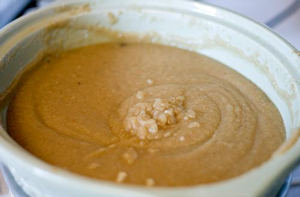 Anytime I have apples that become too soft for fresh eating I make them into a chunky applesauce that’s great along side pork, in oatmeal or as a replacement for bananas in our favorite banana bread recipe. Here’s how I make it: Read the rest of the story »
Anytime I have apples that become too soft for fresh eating I make them into a chunky applesauce that’s great along side pork, in oatmeal or as a replacement for bananas in our favorite banana bread recipe. Here’s how I make it: Read the rest of the story »
Farmageddon: The Unseen War on American Family Farms
Picking up where FRESH and FOOD, INC. left off, FARMAGEDDON explores why Americans’ right to access fresh, healthy foods of their choice is under attack and answers the question: “Why is local food pricey and hard to find?”
This hard hitting documentary by filmmaker Kristin Canty will answer that question and make the viewer think about who owns their body and what kind of terror do America’s food polices inflict on heritage food providers?
Farmageddon highlights the urgency of food freedom, encouraging farmers and consumers alike to take action to preserve individuals’ rights to access food of their choice and farmers’ rights to produce these foods safely and free from unreasonably burdensome regulations. The film serves to put policymakers and regulators on notice that there is a growing movement of people aware that their freedom to choose the foods they want is in danger, a movement that is taking action with its dollars and its voting power to protect and preserve the dwindling number of family farms that are struggling to survive.
Coming into October
And so it begins! My favorite month of the entire year. Every day the weather changes just a little bit more, signaling the end of summer and the beginning of my most favorite season.
October holds most of my favorites; weather that is cool and crisp, on the verge of shifting into winter; favorite smells like damp soil turned and mulched and put to bed; favorite signs of chimney smoke as the seasons’ first fires take the chill off cold houses in the early morning hours; favorite air, with the heady aroma of fallen leaves and spices. October also marks the beginning of favorite traditions and holidays.
We close a chapter now, taking time to reflect on months of planting and growing; harvesting and preserving, and look forward to hearty warming meals, a strict contrast to the vegetable or salad laden meals of warmer months.
There will be days of apple picking and gathering of pumpkins, but there will still be time to practice with our shotguns…skeet shooting and target practice at the local gun club. We’ve gotten dead on accurate with the .22 rifle, but are still working on getting comfortable with the shotgun. A 20 gauge seems easier to manage than the 12, but the weight and out stretched arms pose some balance issues. Kevin and Warren, our coaches, work with us on stance, posture, position, but a well fitted stock would probably resolve most of our troubles. But, that’s for another time.
The beginning of fall is about apples and pumpkins. Apples will be pressed into cider, sweet and cold and crisp; pumpkins will be made into butter, pies and quick breads. I found a new recipe for Pecan-Praline French Toast and was intrigued. Can’t wait to try it!
So there you have it folks…the first weekend of October is about shooting guns, seasonal baking, pressing cider, pork roasts in the crock pot and jonesing for the best this season has to offer. To help kick start your October try one of our seasonal favorites below. Read the rest of the story »

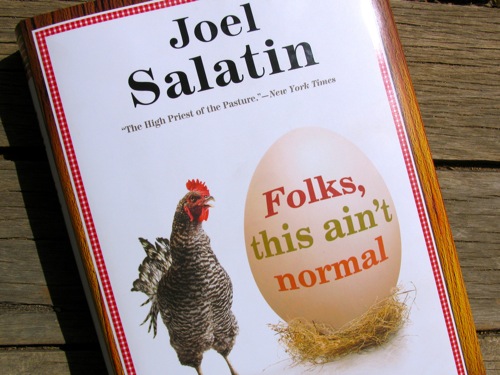
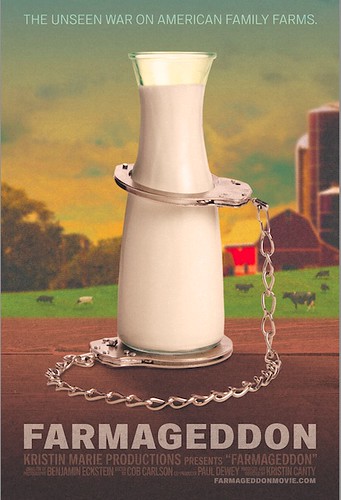
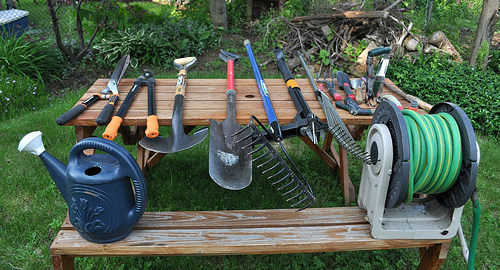

Recent comments
Aenean nonummy hendrerit mauris. Phasellus porta.